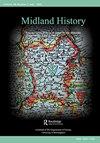‘John Duncalf the Man that Did Rott Both Hands & Leggs’: Chronicle of a Staffordshire Death Retold in the Long Eighteenth Century
IF 0.1
Q3 HISTORY
引用次数: 0
Abstract
ABSTRACT In 1677 John Duncalf, a Staffordshire labourer, fell ill after falsely swearing that he had not stolen a bible. He was visited by droves as he lay helpless, the flesh of his legs and arms mysteriously rotting away until they dropped off and he died. His suffering and death were publicized and debated, and his case was recirculated throughout the eighteenth century. This article analyses the different constructions placed upon his death, showing how there was an anti-atheist Duncalf; a Duncalf for church comprehension; a medicalized Duncalf; a Duncalf the curiosity; a Staffordshire Duncalf; an anti-papist Duncalf; and a Duncalf who was more palatable to Catholics; a Duncalf for the elites; and a Duncalf for the poor; and a Methodist Duncalf. The persistence across the long eighteenth century of a story often told as a Providential warning against swearing allows for some reconsideration of arguments about secularization and disenchantment.《约翰·邓卡夫,那个把手脚都给毁了的人》:在漫长的18世纪里重新讲述的斯塔福德郡死亡编年史
摘要1677年,斯塔福德郡的一名工人John Duncalf因谎称自己没有偷圣经而病倒。当他无助地躺着时,成群结队的人来看望他,他的腿和胳膊的肉神秘地腐烂了,直到它们掉下来,他死了。他的痛苦和死亡被公开和辩论,他的案件在整个18世纪被反复传播。本文分析了邓卡尔夫死后的不同结构,揭示了一个反无神论的邓卡尔夫是如何存在的;邓卡尔夫对教会的理解;药物治疗的邓卡尔夫;a好奇的邓卡尔夫;斯塔福德郡的邓卡尔夫;反papist Duncalf;还有一个更受天主教徒欢迎的邓卡尔夫;精英阶层的Duncalf;和一个穷人的邓卡尔夫;和卫理公会教徒邓卡尔夫。在漫长的十八世纪里,一个故事一直被视为对脏话的天意警告,这让我们可以重新思考关于世俗化和祛魅的争论。
本文章由计算机程序翻译,如有差异,请以英文原文为准。
求助全文
约1分钟内获得全文
求助全文

 求助内容:
求助内容: 应助结果提醒方式:
应助结果提醒方式:


